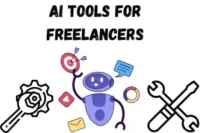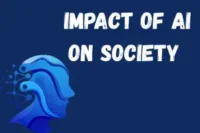Future of AI in Education: Trends, Challenges & What Students Need to Know
Published: 11 Nov 2025
Education is evolving quickly than ever, and Artificial Intelligence (AI) is driving the shift. AI is transforming the classroom of the future, from intelligent tutors that answer questions to technologies that personalize instruction. Students may now study at their own pace, teachers can save time, and schools can use data to boost performance.
However, in addition to these benefits, AI introduces fresh challenges such as privacy, cost, and the need for digital skills. In this article, we’ll look at the future of AI in education, the advantages and concerns, and what the future holds for students and instructors.
How Education Changed with AI
Education has always progressed alongside technology. Initially, students used blackboards and books. Then came computers and the internet, which enabled online learning. Today, Artificial Intelligence (AI) represents the next major step.
With AI, classrooms are no longer bound to a single teaching method. Students can now receive classes created specifically for them. Teachers may utilize AI technologies to track progress, answer questions faster, and even make learning more enjoyable through applications and games.
If you’re new to this topic, you can also explore the types of AI to understand how different AI systems work in education and other industries.
AI Tools Used in Education
AI is bringing new tools that make learning easier and smarter. Here are some of the most common ones:
1. AI Tutors
- Work like virtual teachers.
- Answer student questions anytime.
- Example: Chatbots or apps that help with homework.
2. Adaptive Learning Platforms
- Change lessons based on the student’s level.
- Weak students get extra help, while advanced ones get harder tasks.
3. Smart Assessments
- AI checks quizzes and exams quickly.
- Gives instant feedback so students know where to improve.
4. VR & AR in Learning
- Virtual Reality (VR) and Augmented Reality (AR) make lessons more fun.
- Students can explore the solar system or the human body in 3D.
5. Data & Analytics
- Schools use AI to track student progress.
- Teachers can see who needs help and who is doing well
Benefits of AI in Education
AI is changing classrooms in many positive ways. Here are the main benefits:
1. Personalized Learning
AI can design courses based on each student’s level and learning rate. This allows pupils to better understand subjects and study without feeling lost or bored.
2. Saves Time for Teachers
Grading, progress tracking, and answering repetitive queries are among the activities handled by artificial intelligence. This allows teachers to give more time to educating, guiding, and assisting students personally.
3. Faster Feedback
Students get instant feedback on assignments and quizzes. This quick response helps them identify mistakes and improve their skills faster than traditional methods.
4. Engaging Learning Experience
AI makes learning enjoyable by providing engaging tools, games, and VR/AR experiences. This keeps students engaged and interested in their education.
5. Support for All Students
AI provides extra help for students with learning difficulties or disabilities, ensuring everyone can access quality education and learn at their own pace.
6. Better School Decisions
Schools may utilize AI data to track student performance, organize subjects, and enhance resources. This helps to build a better and more efficient learning environment for everyone.
To see both the benefits and drawbacks of AI beyond education, check out our detailed article on the pros and cons of AI.
Challenges and Risks
While AI brings many benefits to education, it also comes with certain challenges and risks that need careful attention.
1. Data Privacy and Security
One of the biggest challenges of AI in education is protecting student data. Schools must ensure personal information is safe from misuse or cyber threats
2. Bias and Mistakes
AI systems are sometimes biased or provide incorrect responses. If teachers fail to closely monitor and adjust the findings, this might hurt learning.
3. Teacher Training
Many teachers require appropriate training to use AI technologies effectively. Without supervision, these technologies may not be utilized effectively, limiting their usefulness.
4. High Costs and Limited Resources
AI technologies can be expensive. Not all schools can afford them, which can create a gap between well-funded and under-resourced schools.
5. Digital Divide
Students without stable internet or gadgets may lose out on the benefits of artificial intelligence. This gap can make education less equitable for everybody.
Real-Life Examples
In the United States and Europe, AI tutors and adaptive learning systems enable students to study at their own pace, provide quick feedback, and make classes interactive through VR/AR. In nations such as Pakistan and India, AI applications assist students with supplementary courses or test preparation, enhancing learning even with minimal resources. Tools such as smart grading software and AI chatbots demonstrate how AI is already assisting both instructors and students in the classroom.
AI and the Future of Education
AI has the potential to change the way students learn and teachers educate. In the future, classes will be tailored to each student, allowing them to focus on areas where they need to grow. Smart AI teachers will give help at any time, and VR and AR technologies will make studying more entertaining. Teachers will spend more time mentoring students rather than on routine tasks such as grading and tracking progress. Schools will utilize AI data to make more informed decisions regarding teaching and resources. Overall, AI will provide a more efficient, dynamic, and student-centered learning environment, preparing students for future careers and the digital age.
Tips and Recommendations
To make the most of AI in education, students, teachers, and schools need to follow some simple and practical steps.
- For governments: Establish clear AI regulations, invest in internet and digital infrastructure, and fund teacher training programs.
- For Schools and instructors: Use safe and dependable AI technologies, properly educate instructors, and effectively incorporate AI into classrooms.
- For Students and Parents: Learn basic AI skills, utilize AI tools properly, and balance technology and traditional learning approaches.
- Focus on Accessibility: Ensure that AI technologies reach students in remote or disadvantaged locations, so that everyone benefits.
- Monitor and evaluate: Check in regularly to see how AI technologies are assisting students and alter techniques for better results.
Conclusion
Artificial intelligence is transforming the way we learn and teach, making education more customized, interesting, and successful. We hope that this article was useful and educated you on something new about the future of AI in education. Did you like reading it? We would love to hear your opinions! Share your thoughts in the comments section and tell us how AI is altering your learning experience. Don’t forget to read more articles on our website to keep up with the latest in education and technology.
Frequently Asked Questions [FAQs]
Here are some frequently asked questions regarding artificial intelligence in education, along with easy answers to help you understand how it is transforming learning and teaching.
AI helps students learn better by tailoring classes to their specific requirements and speed. It helps teachers by automating grading, tracking progress, and providing data-driven insights. AI solutions such as smart tutors and interactive platforms improve learning engagement and effectiveness, preparing students for future skills and employment.
AI will continue to advance and impact the way we live and learn. In education, it will offer tailored learning, intelligent instructors, and interactive experiences. Teachers are going to give more time to mentoring, schools will make better decisions based on AI data, and kids will develop valuable digital and AI skills for future careers.
AI can be categorized into seven main types based on capabilities and functionality:
- Reactive Machines
- Limited Memory
- Theory of Mind
- Self-Aware AI
- Narrow AI (Weak AI)
- General AI (Strong AI)
- Superintelligent AI
Yes, if suitable instructions and secure devices are used. Schools must maintain data privacy and protect student information.
Basic digital literacy is enough. Learning how to use AI tools responsibly will help students get the most benefits.

- Be Respectful
- Stay Relevant
- Stay Positive
- True Feedback
- Encourage Discussion
- Avoid Spamming
- No Fake News
- Don't Copy-Paste
- No Personal Attacks

- Be Respectful
- Stay Relevant
- Stay Positive
- True Feedback
- Encourage Discussion
- Avoid Spamming
- No Fake News
- Don't Copy-Paste
- No Personal Attacks





